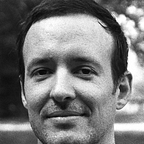Generative Adversarial Networks (GAN) have been a very interesting with an expanding range of applications in the last years.
One of the usages they can be put to is to generate a detailed image from a blurry image. Pulse — a project based on Stylegan — has exactly this use case.
This turned the famous CSI enhance scenes — where an investigator of the famous TV series continually zooms in an image without loss of resolution— from very unrealistic to real.
Using pulse I generated realistic images from emojis like the ones below:
The realistic picture of a person — who does not exist — on the right is generated exclusively from a blurry version of the emoji on the left.
How it works
Let’s see an example:
- Here we can see Lena as a 16x16px image (Fig 1)
- We run it through pulse to get a a detailed version (Fig 2)
We can see how from Fig 1 is interpreted as Fig 2, which is plausible but different from the real image (Fig 3).
This is key: the GAN is guessing a plausible image. It is not recovering information, which is not there to be recovered. It is imagining a possible high resolution version based on the data it was trained on.
The code
Installing and setup on linux.
Running
There are two main scripts we need to use:
align_face.pysets all the images in the input folder in the right format and downscales them to the desired size. The less resolution — more downscaling — the more roomthe GAN has to reconstruct the high resolution image.run.pygenerates the prediction and — optionally — saves the intermediate steps. This can be useful to generate animations such as the one picturing Lena at the beginning of this article.
You can check the default arguments for both scripts at:
- https://github.com/adamian98/pulse/blob/master/align_face.py
- https://github.com/adamian98/pulse/blob/master/run.py
Next steps
For more details check:
- Full list of generated images on github
- For full details on the image generation methods and biases see the article at Generating faces from emojis with stylegan and pulse
